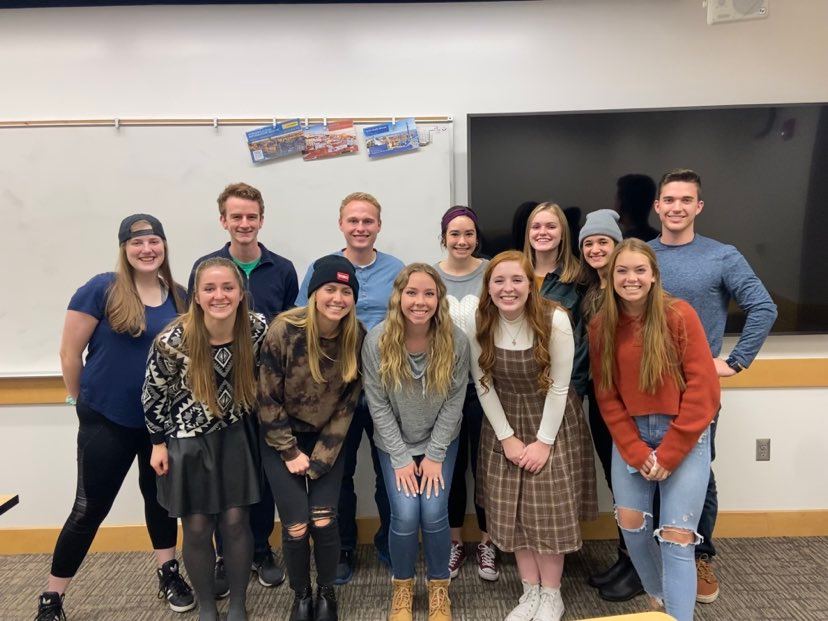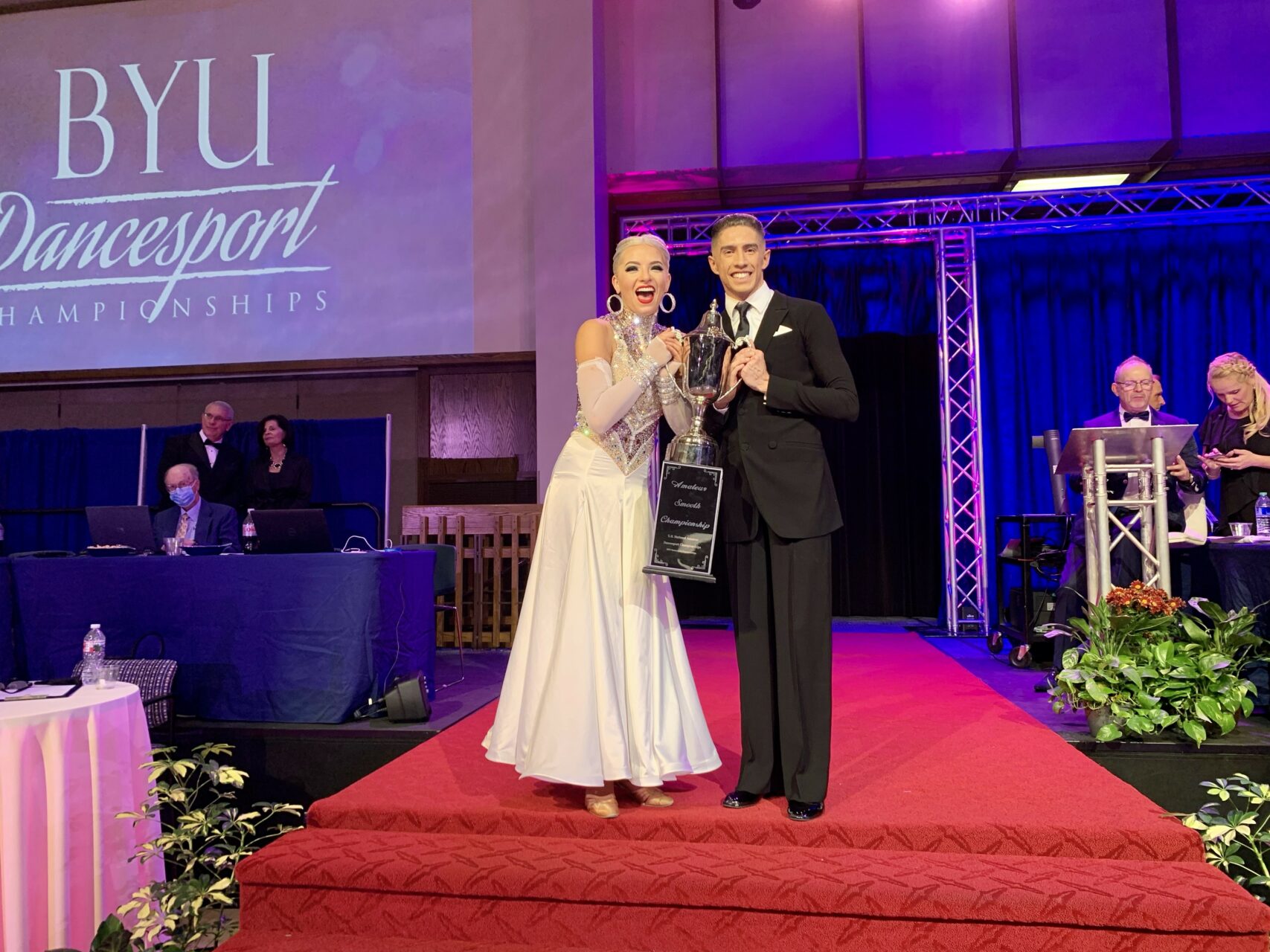
Picture this: You walk into your first day of a BYU class expecting to find a white-haired professor with elbow patches at the whiteboard. Instead, you see a fellow student teaching at the podium. Their backpack is on the floor by their feet so they’re ready to run to the next class they’re taking after they finish teaching the lesson.
This scene happens more frequently than one might think, not only at BYU, but across the country. Graduate students as well as undergraduates are increasingly hired to fill previously faculty-filled positions at universities.
Is there a cost?
Some may wonder if students are at a disadvantage being taught by students rather than full-time faculty. One 2019 study said students taught by less-educated instructors were equally successful in their respective courses. This report compared data from teachers of various academic rates including Ph.D. students, assistant, associate and faculty professors.
“We find no meaningful difference between instructors of different academic rates in how they affect students’ grades, affect grades in subsequent related courses or affect students’ earnings or job satisfaction after graduation,” the report said.
Another study conducted at public Ohio universities in 2016 highlighted benefits recorded for both student instructors and those under their tutelage. Graduate students who teach are likely to graduate faster and be more employable. Their students, as shown by the study, are 10% more likely to major in a subject if the first course they took in that discipline was taught by a graduate student.
“Anybody who has done some teaching knows that it helps you to crystallize your understanding and connect to your own research questions,” study co-author Eric S. Taylor told Inside Higher Ed. “There’s a feedback loop.”
Expanded horizons
That feedback loop has been clear in Dani Hallows’ experience teaching college classes. Hallows is in her second year of graduate studies at BYU, having completed her undergraduate degree here from 2016-2020. She started teaching COMMS 308: Research Methods for Journalism in Fall 2021 and is teaching the course again this semester.
Because she is taking classes while teaching, she feels closer to the student experience and she said it helps her be more relatable and vulnerable with her students. “I felt like sometimes there’s a disconnect between older professors and younger college students. Here, I’m constantly putting myself in their shoes instead of trying to be the teacher,” she said.
Hallows said getting to pass on the knowledge she’s gained in school has made her BYU experience more impactful.
“All of a sudden I was going forth to serve at the same place I’d entered to learn, which was really cool,” she said, referring to the BYU motto. She has loved applying what she’s learned in college by sharing it with other students.
“It just makes all the good experiences that much stronger,” Hallows said. “To say teaching is like the cherry on top doesn’t even begin to cover it.”
Hallows took a teaching class as one of her graduate electives because she was “semi-interested” in having the option to teach. This class was taught by Jessica Zurcher and gave Hallows the chance to learn not only about teaching at the college level but also about parenting skills and church instruction. She was asked to teach COMMS 308 in mid-August 2021.
Teaching the research class broadened Hallows’ idea of what she can do with her education. She said it combines all the skills she loves most and she’d be open to teaching again in the future although she does not have a concrete plan for doing so after graduation.
“It has definitely expanded my horizons,” Hallows said. “I feel like I’m more open than before. I was only into journalism, but now I can see so many connections.”
The teaching major in action
While Hallows was not expecting to teach during college, BYU student Rachel Koncurat always knew teaching would be part of her education. It just came earlier than she expected.
Koncurat started out as a theater education major. She felt inspired to switch to Spanish education after serving a Spanish-speaking mission for The Church of Jesus Christ of Latter-day Saints in Kennewick, Washington.
“I felt like it made a huge impact on who I am as a person and on how I see the world,” Koncurat said of her mission. “That’s why I wanted to continue with Spanish.”
A past professor of Koncurat’s asked her to teach SPAN 101: Foundational Spanish 1. This was in August 2021, just a few weeks before the semester started. Many graduates and undergraduates teach BYU language courses, but most are chosen farther along in the program. Koncurat is set to graduate in April 2023, but the professor believed in Koncurat’s qualifications and asked her to teach.
All Spanish education majors have to complete a semester student-teaching in local schools before graduation, so this job does not count for an internship credit. Still, as a preparatory experience and a salaried job, Koncurat said she feels grateful for the opportunity.
“How many people get to say they taught at BYU during their undergrad?” she said. Koncurat said it feels “surreal” to be a teacher here. “I think that it gives me a lot more of an opportunity to make an impact.”
Koncurat believes the students she had in her class last semester were meant to be in her life. Some students came to her with struggles, class-related and not, such as debating whether to serve a Church mission. One such student received a mission call to Peru this semester and texted Koncurat to let her know.
“I don’t think there are coincidences: I absolutely believe that I was supposed to be their teacher,” Koncurat said. “Getting to teach makes me feel like I really have a purpose here, that I’m really here for a reason.”

Teaching is a big part of undergraduate Brandon Keck’s purpose, too. Keck is an exercise and science major is in his fifth year of studying at BYU.
This winter marks Keck’s second semester teaching DANCE 180, a social dance class, and DANCE 184, an introduction to ballroom dancing. Teaching during Fall 2021 fulfilled internship requirements for Keck. This semester, however, he is on paid staff.
Like Koncurat, teaching has always been the ultimate goal for Keck. Upon graduation he will be a professional ballroom dancer as well as a teacher. He has 15 years of ballroom dance training and is excited to work in a studio in the future.
Keck said teaching at BYU has been an “awesome supplementary experience” to his college experience. He said he likes the job because he is qualified for it as well as fulfilled by it. He also enjoys the ease of going straight from work to class and back again.
“Teaching has helped me appreciate the many different people who attend BYU and learn to see from others’ perspectives,” Keck said. He said he’s learned to be less perfectionistic in his expectations as he’s worked with different students, focusing more on their journey of development as dancers.
The challenges
Student teaching is not without its difficulties. Hallows said she felt like she was “walking a tightrope” while teaching her first class last semester. She said she knew how much her students were struggling because she had been in their shoes, but she also knew she had to push them to help them become the best they could be.
The class consumed a lot of Hallows’ life. She said even when she had other things going on in her education and family life, all she could think about was planning for her students.
“I learned so much,” Hallows said of her time as a teacher. “I felt like it was the most successful thing I’ve ever done in my life.”
Another difficult part of teaching was transitioning into teaching a second semester. Hallows loved everybody so much in her first semester and was so happy with how things went in that class, she worried the next time around wouldn’t go as well.
“I think it’s still a learning process because each class is so different,” Hallows said. “You have to think individually about a lot of the students in your class, and so that’s going to change semester to semester.”
She has been happy with how things have gone so far, though. “They’re different, but they’re great in a different way,” she said.
One tool that helped Koncurat adjust to teaching was having a supervisor she met with once a week for a one-credit teaching class. Taking this class at the same time she taught a Spanish class gave her the chance to ask questions and receive feedback during her instruction process.
Koncurat was surprised to be paid on a salary instead of hourly like most college jobs. She said this different approach helped her be more intentional about how she spends her time, making sure she focuses on resources that will help her students most.
More opportunities to teach are available than people realize. Koncurat said taking a job as a college Spanish teacher was intimidating, but it helped her realize she is more qualified than she thought to teach a wide range of students.
She advises students to take opportunities that come their way, even if they’re intimidated by the prospects.
“Don’t worry about feeling like you’re not enough, because I think we grow to fit the opportunities that we’re given. And with time you’ll figure it out,” Koncurat said. “It’s not going to be exactly the same as what you imagined. But that doesn’t mean that you’re not capable of doing it.”




